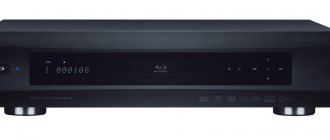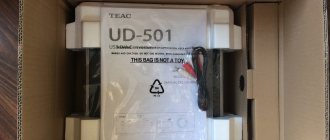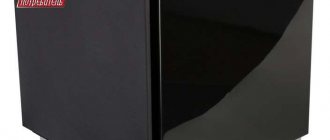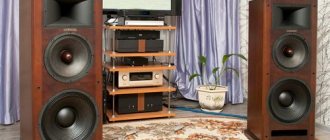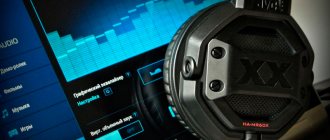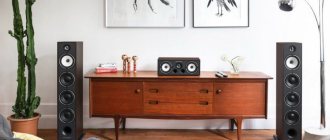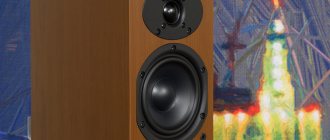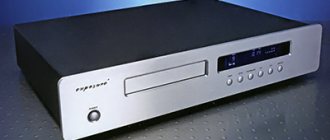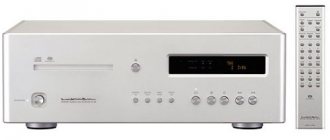Save and read later -
Actually, I don't test turntables. Everything I knew about records remained in my childhood - a cheap radio quickly cut down my first ever vinyl disc with Sting’s album “The Soul Cages”. After that, I switched mostly to cassettes, never having filled my vinyl memory enough to sigh nostalgically for large paper sleeves. However, the Teac TN-100 is now standing in front of me, and I am writing this text.
And it turned out this way because in a conversation with our cool vinyl author Viktor Gorbatov, we decided: I should try an entry-level turntable. It’s difficult for him to test such models (Vitya has seen turntables with many zeros in the price tag of a variety of exotic designs), but here is the simplest model, which, in his opinion, there’s nothing to talk about. And it is intended just for vinyl noobs like me, when the desire to “touch” vinyl has already appeared, but the desire to spend a lot of money and “get into the topic” is not yet there. But don't worry, Victor will give a professional opinion at the end of this test, and I will try to describe my experience with this turntable. I hope it will be useful to those who are thinking about buying a record player and cannot understand whether they need it or not.
The Teac TN-100 player is equipped with a plastic cover, which has rubber bumpers to prevent scratching the table.
And immediately a spoiler: if you think that at the end I will say how wonderful the analog world is and I’m already running to the store for this turntable - nope. I remained in the same skeptical mood as before the test, but something became clearer - it became a little clearer to me why people buy vinyl in the first place and what they find in it.
Unboxing
The Teac TN-100 model opens the model range of turntables from the Japanese company - in Russia they ask for it in the range of 15,000 rubles. The official website says that this is an “affordable turntable for vinyl lovers” with a belt drive, and the company focuses on the latter fact - it seems to be better than if the turntable had a direct drive, like DJ turntables.
Indeed, there is an opinion that direct drive (when the motor spins the disc itself) does not maintain speed so evenly and can interfere with the tonearm due to its physical proximity to it. However, there is another opinion, which says that a normal direct drive is more expensive to make than a decent belt drive (when rotation is transmitted through a belt), so it is better to use it in an inexpensive model. From which I conclude that the belt drive for the Teac TN-100 is a logical and correct solution.
In this photo, a belt is visible in the oval hole of the disk, transmitting torque from the engine to the disk.
In addition to the belt drive, the marketing materials also emphasize the presence of a built-in ADC, but I’ll talk about its operation a little later, but now it’s time to open the box.
The player is quite light - just under 5 kg, I personally expected more when I took it out. The needle, mat and power supply are packaged separately. The latter seemed to me too unconvincing in an audiophile manner - it looks like those used to recharge a mobile phone. It is clear that the player only needs 1.5 watts to operate (12 volt power supply), but in Hi-Fi class audio equipment it is customary to make things more significant. Okay, we won’t have to look at it often, so once we plug it into the socket, we’ll forget and forgive.
Complete power supply and unbalanced cable.
The player itself looks more than decent, and I would say above its price. The MDF body and cherry finish give the turntable that vintage feel that new vinyl fans are often looking for. The body rests on four rubberized legs, designed to serve as a vibration isolator. And the company writes about the case itself that it is heavy and dampens the player well.
This is what the Teac TN-100 player looks like without the cover and mat.
Having connected the power, I took the mat out of the package. It is made of neoprene and, according to the company, also plays the role of a damper. It doesn't indicate which way to put it on the disc, so I read the instructions, but couldn't find anything about it. I wrote to Gorbatov, but since he showed up only the next day, for the first few hours I listened to everything wrong. In short - edges up.
I put the record on the disk and... almost broke the tonearm latch, because I didn’t know that there was one there, and I couldn’t understand why the tonearm didn’t want to turn. After that, I put the tonearm over the record, lowered it, heard a creak - something was going wrong. There was a white plug on the pickup. Having removed it and placed the needle on the disk, I finally heard quiet creaks.
I specifically described the steps in detail to make it clear to people—those who decided to get involved with vinyl for the first time—that this technique, unlike the familiar number to everyone, requires attention and some basic knowledge. This is not an “intuitive phone app.” So be prepared.
Characteristics of the TEAC TN-100 vinyl player
| Frequency range | 20 Hz - 20 kHz |
| Stereo separation | more than 20 dB |
| Channel imbalance | less than 2.0 dB |
| Signal to noise ratio | 67 dB |
| Output level | 3.5 mV (Phono), 120 mV (line out) |
| Disk rotation speed | 33.3, 45, 78 rpm |
| Support disk | 300 mm, plastic |
| Drive unit | belt |
| Vertical tracking angle | 20 degrees |
| Downforce | 1.5 – 2.5 g |
| Speed Accuracy | +/- 2% |
| USB | A/D (USB 1.1) up to 48 kHz |
| Tonearm | straight |
| Pickup | fixed, elliptical needle |
| Dimensions (WxHxD) | 420 x 117 x 356 mm |
| Weight | 4.9 kg |
Connect & Listen
My next goal is to hear the music, and not the creaking of a stylus on a record. The Teac TN-100 model has three connection options: Phono MM, analog and digital USB. The analog output is selected by a switch on the rear panel, but the digital output always works. Since I don’t have a phono stage, I used the analog line output and the digital one in turn.
During testing (I had the turntable for a couple of weeks), I ultimately chose a direct analog connection, although digital was easier to integrate into my system.
I will note that at first I liked listening to the digital connection more, when the output signal passed through the usual DAC. It happened this way because it was a sound that was already familiar to me. However, after forcing myself to listen to the pure analogue longer, I decided that this connection was still more interesting.
I will note that at first I liked listening to the digital connection more, when the output signal passed through the usual DAC. It happened this way because it was a sound that was already familiar to me. However, after forcing myself to listen to the pure analogue longer, I decided that this connection was still more interesting.
I don’t have any records in my personal music library, so a colleague brought me a few discs to test. I started with a familiar Pink Floyd record released in 1988. On the one hand, there is a certain nostalgia, and on the other hand, I listened to Pink Floyd for the most part already in the CD days. And so I immediately downloaded this album digitally and started comparing. The comparison was very unfavorable for the record.
Covers of TACET's Four Seasons and Pink Floyd's "Delicate Sound Of Thunder" records.
One day a bass player I knew explained to me how a bass should sound. According to him, this is when it feels like huge foam balls are rolling towards you, collide with you and then bounce off gently. So, just such a “foam rubber”, fast and deep, but large-scale and significant bass is characteristic of most Pink Floyd records. And it can be heard perfectly on concert recordings in digital formats. However, the record makes it different: the bass becomes high, defined, and I would even say contrasting. Personally, I didn’t like this sound: apparently, to listen to Pink Floyd on vinyl, you either need a higher class player, or Pink Floyd shouldn’t be listened to on vinyl at all.
The rear panel contains an analog output, a Phono/line switch, a USB type A output, a power connector and a power button.
Another thing is classical recordings. The 180-gram record of Antonio Vivaldi performed by the Polish Chamber Philharmonic Orchestra "Tacet's Four Season" in 2008 played more interesting than its digital version. It should be mentioned that the German studio Tacet specializes exclusively in analog recordings and the disc cover says “Tube Only” - the orchestra was recorded using microphones with tube preamps, mixed on a tube mixer and saved on magnetic tape, after which it was transferred to records. That is, this is an example of a completely analog disc (AAA), which, moreover, following the studio’s recommendations, should be listened to on a system with a tube amplifier. However, even in the transistor version, this is one of the best orchestral (albeit chamber orchestra) recordings, and on vinyl it plays gorgeously - the violins ring, buzz, and saw - very dynamically and brightly. Honestly, this is the very moment when I thought that there would be a place in my house for a turntable, if I collected such records.
The next disc was the live album Puhdys 13 “Live in Sachsen” (1984). I am not a fan of the music of this German group, but, unlike Pink Floyd, here I could not accurately determine which is better - digital or vinyl. Both sounded good and were equally boring to me.
Cover and apple of the All Stars Festival album.
Finally, a record with a collection of jazz songs “All Star Festival” from 1963, released under the auspices of the UN to raise money to help refugees around the world. This is a heavy shellac disc with a cover yellowed by time and it is mono. No stereo for you, but real authentic mono recordings from the middle of the last century. While listening to this record, you really feel the very spirit of the times, the only thing missing is the heavy smell of cigars and whiskey. A wonderful document of the era. And when I played a cleaned (restored) digital recording of the same songs, the difference seemed huge to me. For example, Edith Piaf’s song “Je m’imagine” sounded disgusting digitally, a heavy bass appeared from somewhere, the voice became squeaky, and the dynamics disappeared. Heaven and earth are like two different songs. +100 in favor of vinyl - it’s more original, “historical”, and simply better.
Don't think that this mono-disc "All Stars Festival" is such a rarity.
Here's a note in the Billboard newspaper dated July 13, 1963, where they write about millions of copies of this record. Unfortunately, I didn’t have a single modern record, so I can’t give any impressions of originally digital music. But I think this is not the last time I have a budget turntable on test.
And one more thing about the sound of vinyl records. I have heard more than once that it is less tiring due to better dynamics, and I am ready to agree with this statement. You get used to the clicks and creaks very quickly, they become a pleasant accompaniment, and then, when you turn on digital, it begins to seem that something is seriously missing. So vinyl is addictive.
Turn On & Sleep Mode
But there are also times when vinyl infuriates. I completely agree with those who argue that a gramophone record is a physical embodiment of music. The disc envelope itself can be looked at for a long time and the texts on it can be read. And just holding in your hands a thing on which only a dozen songs are recorded seems in the modern world to be something ancient, but that only makes it more natural. The problem, however, is that 10 songs are on two sides of the record. You won’t even be able to fully listen to an album without just going to the player; in the age of endless music, this is terrifying.
Next to the base of the tonearm there is a lever for raising it and a speed switch.
But upon reaching the end of the side, the Teac TN-100 will lift the tonearm itself, remove it to the holder pad and stop the disk. It looks like mechanical magic, but is called auto-return. For “digital people”, this will be similar to the “Sleep Mode” function in smartphones and players: you can calmly fall asleep - the music will turn off by itself. By the way, the disc also spins up on its own; there is no power button; you just need to turn the tonearm and place it above the record.
Rubberized turntable foot.
It seems to me that the Teac TN-100 has sufficient vibration isolation, thanks to the rubberized legs. And yet, if I accidentally touched the table on which the player stood, the needle would jump or the spin speed of the disc would “float.” And one more interesting observation: when I sat down with a laptop at a table with a player and started typing, at a high volume of music I could clearly hear the clicking of the keys, additionally “played” by the turntable. In other words, I would recommend a separate table for the player, although... there was a certain charm in this voice acting.
Conclusion
From a practical point of view, I found the Teac TN-100 convenient. It comes with a lid under which records play, stops itself, has several output options - it’s easy to integrate even into a digital system. It looks beautiful and plays like vinyl. My experience of listening to more expensive turntables says that the TN-100 does not keep the speed as accurately (sometimes it floats a little), and the sensitivity of the stylus is low - in the sense that the player smooths out small details, there is no need to talk about microdynamics. However, this is definitely a step into the world of analogue hi-fi because it plays music differently.
After this test, I thought that I would transfer some albums and individual songs in my music library to vinyl format in order to hear them “from a new perspective.” As I wrote above, I especially liked the sound of old jazz compositions - the difference with digital was significant. Also, a new emotional side has appeared in recording classical music. But for the sake of classic rock, which many associate with gramophone records, I would not buy this player. However, he played well, and was even less tiring compared to the numbers. Maybe, for the sake of Pink Floyd, I’m simply not ready to once again go up to the player and turn the record over?
Advantages:
price, nice appearance, convenient cover, automatic return of the tonearm at the end of playing the record.
Flaws:
unstable rotation speed.
Description of the TEAC TN-100 vinyl player
The TEAC TN-100 turntable has a classic design that will appeal to both experienced music lovers and those who are just taking their first steps into the world of high-quality sound, and is offered at a very affordable price.
The device is equipped with a belt drive platter, which has certain advantages over the direct drive of inexpensive models intended for use by DJs. For easy connection to the H-Fi system, TEAC TN-100 has two switched outputs - one regular output, the signal to which is fed to a phono stage (external or built into an amplifier or AV receiver). However, if the stereo amplifier is equipped only with a line input, then you can use the player’s built-in phono preamplifier and send a signal from it. Equipped with the TEAC TN-100 and the now popular USB output, which makes it possible to use it to digitize analog recordings on a connected PC in PCM format up to 16 bit / 48 kHz.
Unlike many inexpensive turntable models, the TEAC TN-100 has a fiberboard chassis that provides good mechanical damping of the record and tonearm to dampen unwanted vibrations. The plastic platter is complemented by a neoprene mat, which further improves the anti-resonance characteristics of the player. The support bearing is made of stainless steel, highly polished and placed in a bronze cup.
The statically balanced straight tonearm, made of dense plastic, is equipped with a micro-lift and an auto-stop that returns it to the support after finishing listening to the record. Precisely tuned anti-skating ensures proper tracking of the vinyl disc track. This, as well as electronic switching of disk rotation speed (33, 45 and 78 rpm), greatly simplifies the use of the TEAC TN-100 for novice music lovers. The tonearm is equipped with a Chuden Teac Original Version MM pickup, and the turntable is already fully tuned and adjusted at the factory. So after unpacking the TEAC TN-100, all you have to do is install a record on it, connect the turntable to the appropriate input of the amplifier - and you can listen to music!
Gorbatov's comments
The player, as expected, is lightweight and quite compact. But for its class it is made carefully and not as cheap as one might expect. The table is cut from a solid MDF panel and finished with veneer film. The finish can be either black or cherry. The device has four legs with vibration isolation (provided by the elastic material of the legs and their cup-shaped shape). And in general, this device has enough vibration isolation even taking into account the fact that this player has practically no chance of ending up on a good hardware rack.
Bottom view of the Teac TN-100 turntable
. The turntable comes with a pretty decent hinged dust cover. It even has little rubber bumpers to prevent scratching your desk.
The bottom of the turntable table is covered with a plastic casing, and if you look at it more closely, you will find three holes behind which the trimmers for each of the three turntable speeds are hidden. Unexpected for such a budget device. The location, however, is extremely inconvenient, and the instructions for the device (note that this player is unlikely to end up in the hands of an advanced user) say nothing.
Trimmers for each of the three turntable speeds.
The device has a belt drive, and its design has several features that are typical only for budget players. For example, the size of a disc is slightly smaller than a record. But not as much as is often the case - 11.5 inches. The disk itself is plastic, and, perhaps, this is better than the thin and loud metal “plates” of budget devices. The disk is formally non-removable, so even in order to change the belt (are they replaceable?) you will need to disassemble the player. The same can be said about the potential lubrication of the bearing, if it occurs to someone to be puzzled by such a procedure - the device will sooner serve its purpose than the bearing will have time to dry out.
A thin rubber mat is included with the disc. The motor of the DC player is quite quiet. The power supply is remote, but it powers not only the motor, but also the built-in phono stage and built-in ADC. For a light disk, the motor power is more than enough. What is unusual is that the motor pulley is plastic (usually metal is used), but in this case it is difficult to say what is better - a poor metal pulley or a plastic one.
The tonearm is quite short, with an effective length of only 200mm. It is made mostly of hard plastic; metal parts can only be found inside the rotary assembly. The design does not provide any settings; it is designed to work with a complete head (according to the manufacturer, the design also includes non-adjustable anti-skating), and the installed MM head should be considered conditionally non-removable. The tonearm control is semi-automatic, moving it to the working position starts the rotation of the disk, and you will need to lower the tonearm using a microlift manually. But when the record finishes playing, the tonearm is raised and returned to the holder automatically. Or you can lift it manually using a lift and return it to its original position by hand.
The standard head is MM-type (and it’s good that it’s not piezo) with a replaceable needle. Nothing is said about the service life of the stylus, but the pressure in the base is set to be small, and wear will be determined not so much by the head itself, but rather by the condition of the records being listened to. Moreover, the player has a 78 speed, and if desired, the device allows you to spin shellac, but in this situation there is no point in discussing service life at all. It was not possible to find a price for a replacement needle in Russia; the device was released recently and deliveries have just begun. But if you look for information, knowing the serial number of the needle, it turns out that, firstly, a similar needle is used in many budget devices of a similar class, and secondly, the price “there” in terms of rubles starts from a very modest figure of 500 rubles (approximately ), plus three-dollar (depending, of course, on the place of sale) mail delivery.
Vinyl disc player Teac TN-100 black
Vinyl record player with built-in phono stage and USB output for digitizing records. Passive drive. Straight tonearm. Plastic support disk 300 mm. Speed adjustment 33; 45; 78 rpm Dimensions 420 x 117 x 356 mm. Weight 4.9 kg. Black color.
The TEAC TN-100 turntable has a classic design that will appeal to both experienced music lovers and those who are just taking their first steps into the world of high-quality sound, and is offered at a very affordable price. The device is equipped with a belt drive platter, which has certain advantages over the direct drive of inexpensive models intended for use by DJs.
For easy connection to the H-Fi system, TEAC TN-100 has two switched outputs - one regular output, the signal to which is fed to a phono stage (external or built into an amplifier or AV receiver). However, if the stereo amplifier is equipped only with a line input, then you can use the player’s built-in phono preamplifier and send a signal from it. Equipped with the TEAC TN-100 and the now popular USB output, which makes it possible to use it to digitize analog recordings on a connected PC in PCM format up to 16 bit / 48 kHz.
Unlike many inexpensive turntable models, the TEAC TN-100 has a fiberboard chassis that provides good mechanical damping of the record and tonearm to dampen unwanted vibrations. The plastic platter is complemented by a neoprene mat, which further improves the anti-resonance characteristics of the player. The support bearing is made of stainless steel, highly polished and placed in a bronze cup.
The statically balanced straight tonearm, made of dense plastic, is equipped with a micro-lift and an auto-stop that returns it to the support after finishing listening to the record. Precisely tuned anti-skating ensures proper tracking of the vinyl disc track. This, as well as electronic switching of disk rotation speed (33, 45 and 78 rpm), greatly simplifies the use of the TEAC TN-100 for novice music lovers. The tonearm is equipped with a Chuden Teac Original Version MM pickup, and the turntable is already fully tuned and adjusted at the factory. So after unpacking the TEAC TN-100, all you have to do is install a record on it, connect the turntable to the appropriate input of the amplifier - and you can listen to music!
Features of the TEAC TN-100 vinyl player
Built-in phono stage USB output for vinyl digitization up to 16 bit / 48 kHz Three disc rotation speeds Full auto-stop
Passport details
Body: MDF, black or lacquered cherry finish. Disc: plastic, diameter 29 cm. Drive: belt drive. Speeds: 33/45/78 rpm. Tonearm: statically balanced, effective length: 223 mm. Rotation speed variations: +/–2. Rumble and detonation: 0.2. Signal-to-noise ratio: 64 dB or higher (A-weighted, 20 kHz low-pass filter). Functions: manual microlift. Outputs: Phono MM, stereo line, USB (PCM 48kHz/16-bit). Power: AC adapter 100-240V/12V, consumption less than 1.5 W. Includes: dust cover, power adapter, RCA cable. Dimensions: 420x117x356 mm. Weight: 4.9 kg.
Author of the text: Andrey Dementyev, Stereo.ru.
This review has been read 8,720 times.
Vinyl record player TEAC TN-100
The TEAC TN-100 is the company's most affordable turntable and can introduce you to classic vinyl recordings. Designed for music enthusiasts, it features a belt drive that delivers cleaner sound than direct drive DJ turntables. It has a line output from the built-in phono stage - for use with active speakers or receivers, as well as an output from an MM cartridge - for preamplifiers with a PHONO input. An additional USB output allows vinyl collectors to record music digitally on a Mac or PC.
Unlike many budget turntables, the TN-100 has a solid wood (MDF) cabinet that dampens vibrations and delivers richer, clearer sound.
The 3-speed turntable with auto-return tonearm is available in black or cherry finish. The plastic disc is driven by a DC motor with high torque and stable speed. The durable neoprene mat also absorbs vibration. Stable rotation speed is maintained thanks to a polished stainless steel spindle and bronze bearing. The TN-100 also differs from many other vinyl players in the presence of a built-in ADC on a Texas Instruments chip, which allows you to transfer music from LP records to a computer via a USB connection. The mechanics of the player use a belt drive disc with a selectable speed switch of 33/45/78 rpm, with auto-return, as well as a simple straight-type tonearm and a microlift.
- Passive disk drive with selectable speeds 33/45/78, DC motor. current, manual microlift
- Solid MDF body with lacquered finish
- Signal-to-noise ratio: 64 dB or higher (A-weighted, 20 kHz low-pass filter)
- Player disc: plastic, diameter 29 cm
- Rotation speed variations: +/–2%
- Rumble and detonation: 0.2%
- USB output (PCM 48kHz/16-bit) for transferring music from LP records to a Mac or PC.
- Built-in phono stage with LINE/PHONO switch
- Statically balanced straight tonearm, eff. length: 223 mm
- Outputs: LINE/PHONO on RCA, USB-B (to computer)
- Power: via AC adapter 100-240V/12V (included), consumption: less than 1.5 W
- Dust cover: included
- Accessories: RCA cable
- Dimensions: 420(W) x 117(H) x 356(D) mm, weight: 4.9 kg
- Finish: black or lacquered cherry
Discuss on the forum...
Tags: TEAC TN-100


